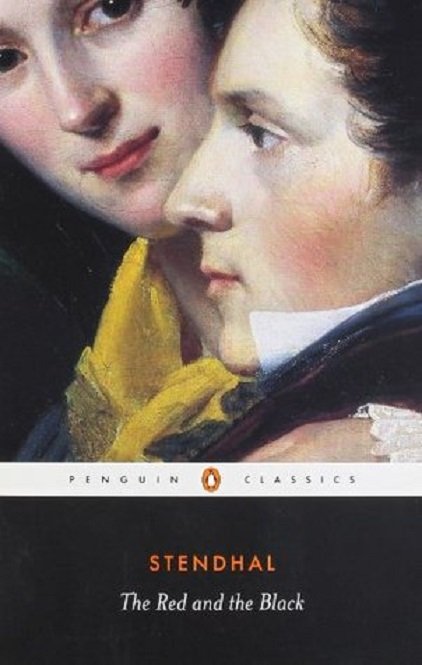Life and creativity of Stendhal /part 2/
Beneath the transparent nickname Henry Bruller, starting with the same letters that write the real name of the writer Henry Bale, Stendhal describes his own life. He stops not so much of the events in him as the rifts and transitions, he tracks not so much his actions as the fragile thread that connects them. The narrator patiently unravels this thread, which connects the numerous twists in his existence. Without taking strict account of the chronology of the events in his life, Henry is mostly concerned with the staggering twists, the various positions he has occupied in the difficult moments, the phrases that have been incarnated in his memory. But these twists, positions, and phrases are being processed in the process of writing these kind of artistic memoirs. Concerned above all about the accuracy and the passing of his original philosophy about his own "self," the author relies on fast-paced strokes, a detailed plan, and detailed descriptions. In the center of attention of the narrator, it turns out that the two-party family, which was degraded in the early days. On one side, the egotistical, conspicuous and dull father, with an aristocratic prejudice, with a backward vision of life who trusts the terrible aunt Seraphim, a woman with a mentality of a mournful stepmother to the son at home, and the family priest, the abbot Rayan, who as a hateful self-tyrant poisoned Henry's childhood. On the other side is the charming, cheerful and gentle mother who speaks freely Italian, loves the music, and her father, Dr. Ganyon, Henri's grandfather, who carries the liberal spirit of his poem, the philosopher Volter.
Among the memories of his native Grenoble, the author has the drama: "My mother, Mrs. Henriette Ganyon, was a charming woman I was in love with for the house where her summer is going and for the early childhood. I am quick to add that I lost it when I was seven years old. "From the time of his mother's loss and his arrival in Italy, his true homeland, closely linked to the personal myth of "the mother-Italian ". speaking Italian, the personality of Henri Bruller is formed. The year 1806 marks a turning point in Stendhal's career, as his relative Earl Darwigh was then appointed as a general midwife in Napoleon's army. He also appoints his younger relative as assistant military commissioner of the German city of Brunswick. Henry Bale then met Germany and Austria. As a clerk in the army, Stendhal has the opportunity to get to know Napoleon and Europe in war. He witnessed the burning of Moscow, withdrew with the army from Russia, and participated in the organization of the defense of the French province of Dofine when he returned to France. After the fall of the Empire, Napoleon decided to settle in Italy. But he still has to return to Paris, in whose higher society he is constantly looking for success at the expense of many passionate passions, most of which end in disappointment and even enduring despondency. Thanks to his cousin, Pierre Darui Stendal receives service in the Emperor's army. He became an officer, an officer in charge of supplying Napoleon's troops. He follows the mighty army's march through Germany, Austria and Hungary. Later, he was promoted to the prestigious post of "auditor of the State Council". In 1811, Stendhal was at the height of the secular career he had dreamed of as a teenager.
Torn between his passionate enthusiasm by Angela Pietragrua, his travels and duties, Stendhal began writing his first work, "History of Painting in Italy" (Histoire de la peinture en Italie). Part of this study was lost during the retreat of Napoleon's army after its failed march for Russia's conquest. Napoleon's defeat interrupts Stendhal 's successful career. Remaining without money, he settled in Milan, where he remained until 1821, as he found that Italy was not part of the display, and in it the poor man went through a decent life without being ashamed of the misery. There he meets the true love that leaves the most enduring traces in his intimate life. He fell in love with Methidad Dembovska. In 1815 Stendhal published a second essay "The Life of Haidin, Mozart and Metastasio," which he describes as "music criticism". He signed it with the pseudonym Louis-Alexander Bombe. In 1817, he finished an unusual work, which, as a genre, was at the bottom of the journey between the travels and the art studies - Rome, Naples and Florence (Rome, Naples and Florence). This work, which appeared for the first time in 1817 (the final edition appeared in 1826), was signed for the first time with the pseudonym Stendhal . During his stay in Milan, Stendhal experiences a deep emotional drama. He falls in love with Médido Dambovski, the woman who dwells on his mind, but refuses to share his passionate dedication and soon leaves him. In Milan, Stendhal befriends the liberal circles of the city and maintains secret connections with the Italian Carbonari who are acting underground. Then he became a zealous reader of the English magazine Edinburgh Review, devoted to studying the history of music and painting. The political friendship of the writer made him too suspicious of the local Austrian occupation authorities, and he was finally forced to leave Milan in 1821.

Wow, part 2 is literally interesting as part one
Thanks for sharing @godflesh
Waiting for the next episode and I hope I be the first in the comment list again
Stay blessed
this post is very intersting